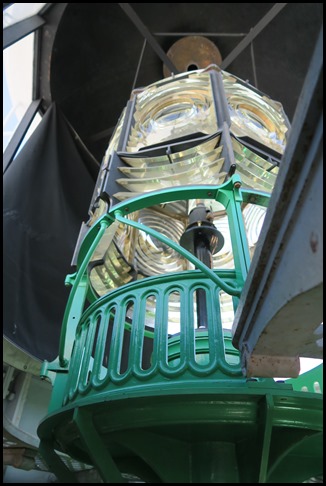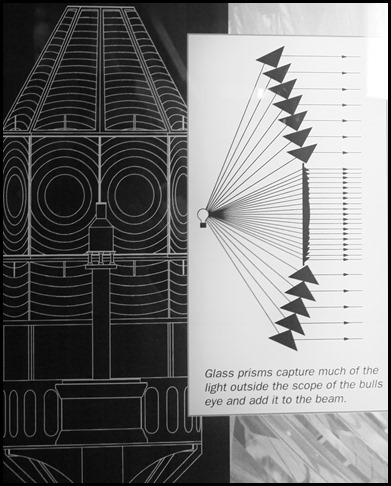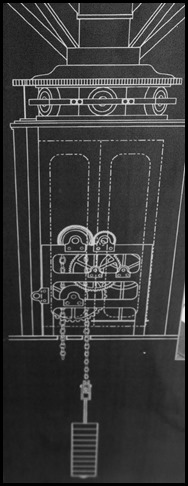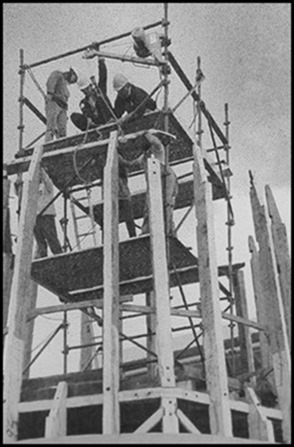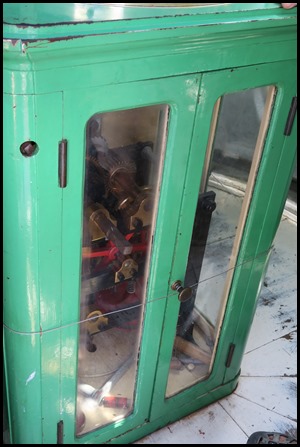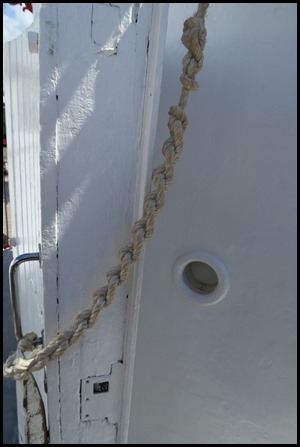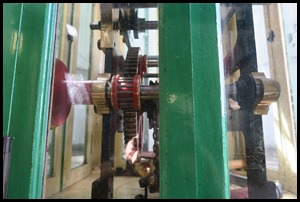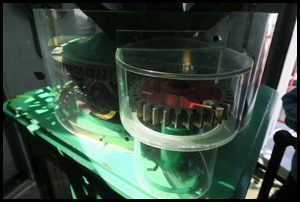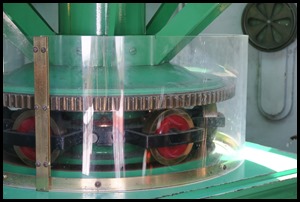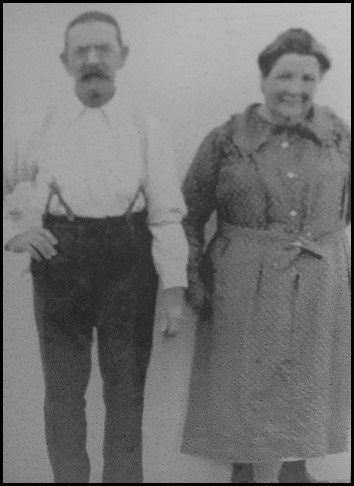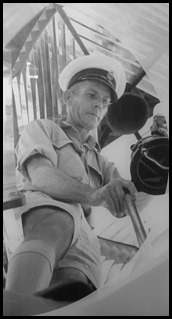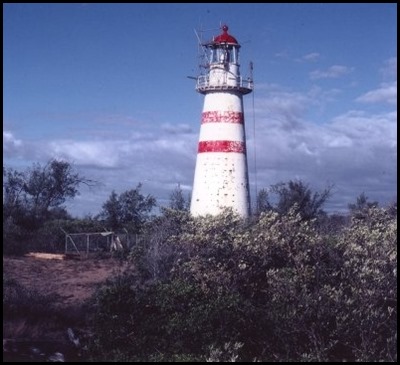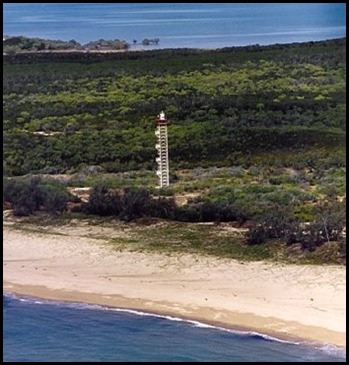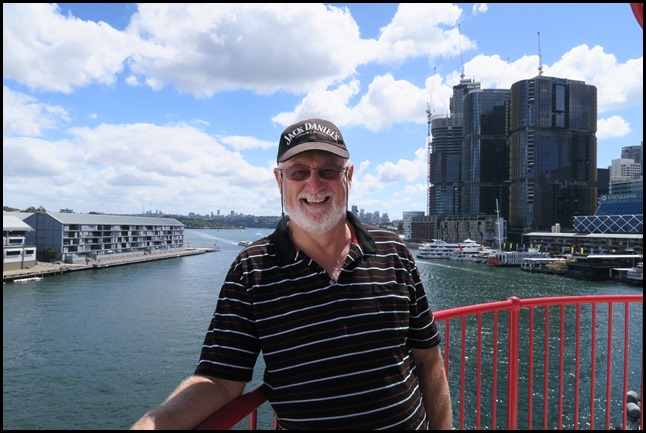Cape Light at NMM

|
Cape Bowling Green
Lighthouse
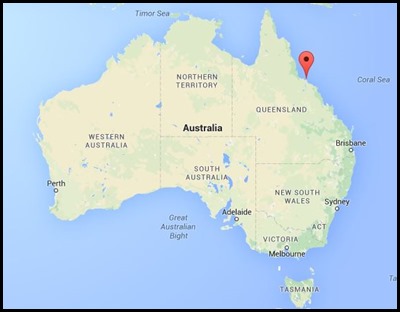  Cape Bowling Green Light is
an active lighthouse located
on Cape Bowling Green, about thirty kilometres (nineteen miles) from Ayr in Queensland.
The lighthouse is at the end of the headland, near
the base of the sandspit.
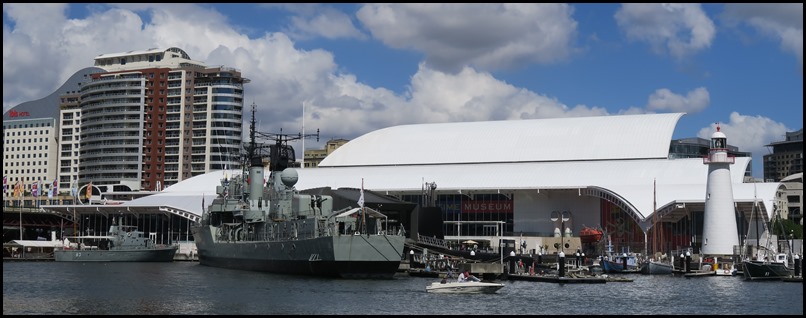 The
first lighthouse at the location, established 1874, was moved multiple times. It
was prefabricated in Brisbane, shipped to the location, moved twice due to coastal
erosion and
finally transferred for display at the Australian National Maritime Museum at Darling
Harbour.
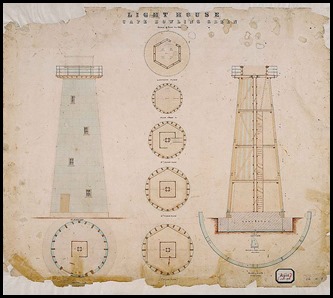 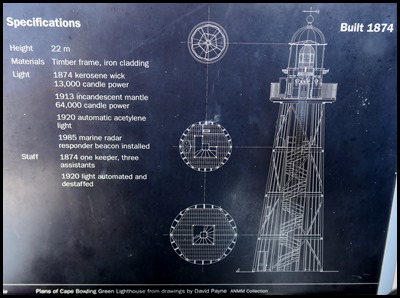 Plan and
Specifications.
 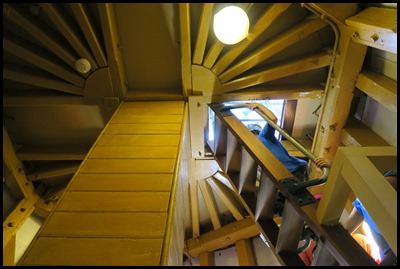 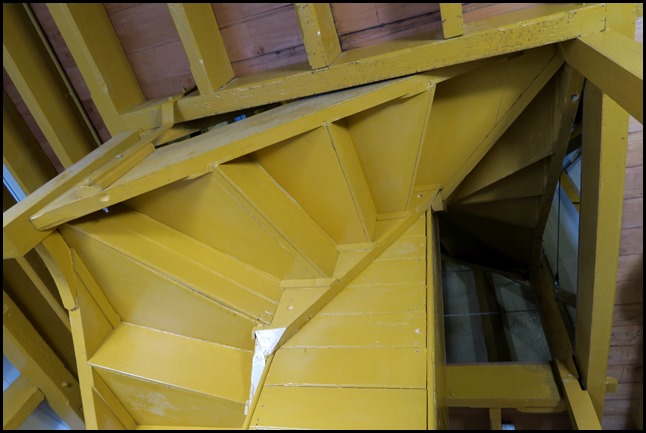 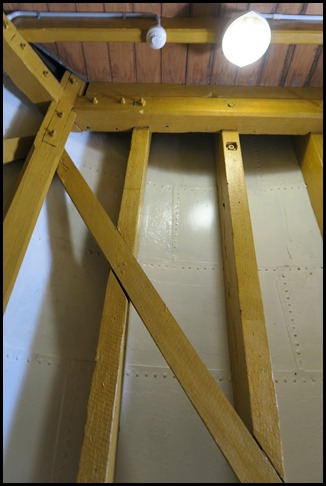  History: Many ships wrecking at Cape Bowling Green necessitated the construction of a lighthouse at the cape. The first Cape Bowling Green Light was constructed in 1874, one of twenty two lighthouses of similar design constructed in Queensland around that time. It was a round conical tower, constructed of local hardwood frame clad with galvanized iron plates imported from Britain. The lighthouse was prefabricated in Brisbane, then dismantled and shipped to the location to be erected again.
The construction was done by the brothers John and Jacob Rooney of Maryborough, which also constructed Sandy Cape Light, Cowan Point Light, Cape Capricorn Light, Lady Elliot Island Light and Booby Island Light.
The original lens was a 3rd order Chance Brothers dioptric lens, and the light source was a kerosene wick lamp with an intensity of thirteen thousand candela, visible for fourteen nautical miles. Like a candle it sends out light in all directions. It is concentrated into a beam to make the light brighter – seen below. This is done by a system of lenses which uses the refracting properties of glass. At the centre of the system is a bull’s eye lens. It is surrounded by glass prisms which capture much of the light outside the scope of the bull’s eye and add it to the beam. In this way the light can be seen over many miles.
The light is turned by a clockwork mechanism which is powered by a weight falling down the timber tube in the centre of the tower. The weight is wound up by the keeper and as it falls it turns the light. The lighthouse was destaffed when two new innovations were introduced. The new light was fuelled by acetylene gas which needed to be serviced only once a year. It was turned on at dusk and off again at dawn by a sun valve – a mechanism which used the different rates of expansion in sun light of a dull surface and a shiny one.
The lighthouse being rebuilt here. The mechanism housing. The thick door at the top.
The apparatus was rotated with the clockwork mechanism.
John Kidd was superintendent at Cape Bowling Green from 1902 to 1912. Both John and his wife Esther were descended from mariners. Cape Bowling Green was originally staffed by a head keeper and three assistants. Together with their families, they lived in four cottages on the site. It was a lonely outpost in which status was important and the head keeper insisted his assistants call him ‘sir’. Keepers were often retired seamen who liked the continuing link with the sea and were used to living away from towns.
The keepers worked in shifts to keep the light burning, checking the kerosene wick every thirty minutes, pumping fuel up to the light and winding up the weights to keep the lens burning. The isolation brought hardships. Amy Eddison began teaching the keepers’ ten children in a school at the light station in 1886. She only lasted a year before resigning – to escape the drunkenness of the couple with whom she boarded. The beautiful locations of some lights could make up for the loneliness but Cape Bowling Green was not one of those, it was automated and destaffed by 1920.
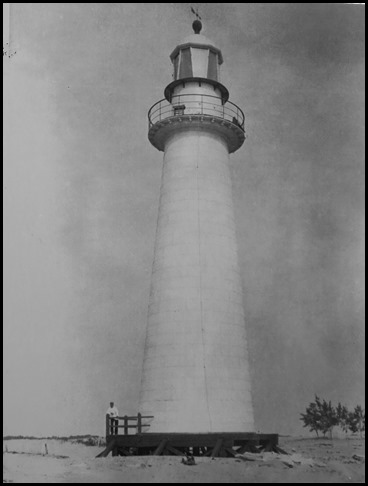 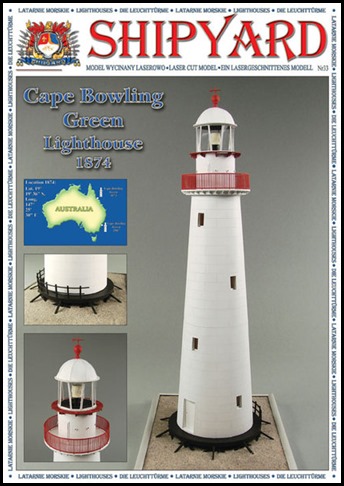
The lighthouse in 1917 and as a model kit.
In 1878 beach erosion threatened the lighthouse for the first time and it was moved and in 1908 the tower had to be relocated further away for the same reason. In 1913 an incandescent gas mantle operated by vaporised kerosene was installed, raising the power to sixty four thousand candela. In 1920 a fixed automatic acetylene gaslamp (carbide lamp) with a sun valve was installed. As a result, the lighthouse was demanned and all other buildings were demolished.
Old and New
In 1985 a racon was installed. In 1987 the lighthouse was replaced by the current skeletal tower. With the sponsorship of the Australian Maritime Safety Authority, the lighthouse was dismantled, and sections were lifted by a Department of Transport helicopter to a site where they were numbered, crated, and shipped to Sydney. By 1994 the lighthouse was reassembled at the Australian National Maritime Museum where it is now on display. The lighthouse is still operational, using the original 3rd order lens and a typical 1913 clockwork mechanism, and it maintains its original light characteristic, four white flashes every twenty seconds (Fl.(4)W. 20s). The current tower is a square steel skeletal tower. It is topped by a square lantern structure with a gallery. It is painted white with a red horizontal band at the top. The light characteristic shown is as before - four white flashes every twenty seconds (Fl.(4)W. 20s), visible for eleven nautical miles.
The view looking out of Darling Harbour from the top of the lighthouse.
ALL IN ALL LOVELY TO SEE IT IN USE, ALBEIT AS A TOURIST ATTRACTION AMAZING LIGHTWEIGHT STRUCTURE |

